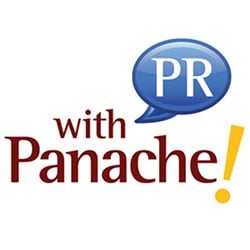With so much riding on tests today, it’s never been more important that schools get a grip on the actual assessments they’re giving from every possible angle. From making sure that every assessment is important, easy to administer to being as close to uniform from class to class, testing is just as important to the future of the school as it is to every student.

Naiku’s Districts/Schools has a deep library of questions to use and the automatic tabulation of testing results. When the dust has cleared, the service can create insightful reports on student and class progress as well as allow teachers to see who is leading and who is lagging.
Because Naiku is an online service, there’s no software to load. Just log into an account with just about any connected system and get started. In addition to Windows and Mac systems, it works with iPads, Android tablets and Chromebooks. It can even be used with phones and the interface magnifies the question and answer section to make it readable on the small screen.
 The best part is that the service requires minimal resources, so older computers will do just fine for administering assessments. In the background, Naiku automatically scores tests as they are taken for nearly instantaneous results. For those schools without the equipment or where the network that doesn’t reach every classroom, teachers can print Naiku assessments and do everything the old fashioned way. The paper tests can be graded manually or scanned and scored using GradeCam software.
The best part is that the service requires minimal resources, so older computers will do just fine for administering assessments. In the background, Naiku automatically scores tests as they are taken for nearly instantaneous results. For those schools without the equipment or where the network that doesn’t reach every classroom, teachers can print Naiku assessments and do everything the old fashioned way. The paper tests can be graded manually or scanned and scored using GradeCam software.
Naiku’s green and white interface is bright and works well with low-resolution screens. It has the look of an actual printed test and includes instructions for taking the test at hand. On top of an area to fill in the answers, the test blank has optional sections for the student to fill in his or her confidence level and leave a passage about how he or she felt about the question or subject matter. Unfortunately, schools and districts can’t customize Naiku’s interface beyond adding a picture to the screen.
Tests can have a time-limit or be broken up over several sessions, but Naiku’s online connection is its greatest strength and – unfortunately – weakness. Sure, it allows a wide assortment of systems to be used without loading any extra software for administering the assessments, but it doesn’t work as well offline. Kids can finish tests that were started in online mode if the Internet link is broken or the school-day ends, but that’s about it. They need to wait for network access to submit their answers or start a new test.
Naiku’s test generator is a gem and requires no programming to get the most out of it. You can choose questions in a variety of formats, including multiple-choice or multiple-select, True/False, drag and drop matching, constructed response, passage and essay. While the majority are automatically scored and are quickly posted for viewing by teachers during the exam, some items need to be scored and tabulated manually by a teacher. All grades can be automatically dropped into just about any digital gradebook that the school cares to use.
 The company’s Benchmark Now! Service has a variety of tests available from Houghton Mifflin Harcourt’s Assess2Know Benchmark Item Bank for grades 3 through high school. A school or district can also create a wide assortment of tests from curriculum maps in a matter of minutes. The service includes access to about 45,000 Common Core categorized and aligned questions, but they are not aligned with popular textbooks.
The company’s Benchmark Now! Service has a variety of tests available from Houghton Mifflin Harcourt’s Assess2Know Benchmark Item Bank for grades 3 through high school. A school or district can also create a wide assortment of tests from curriculum maps in a matter of minutes. The service includes access to about 45,000 Common Core categorized and aligned questions, but they are not aligned with popular textbooks.
You can add new items from TestGen, ExamView and even import them from existing tests or from .doc, .pdf or .xml sources. In fact, Naiku’s QuickKey wizard can turn just about anything into a test.
Tests can be shared among teachers and administrators or kept private. To reduce cheating, any test can have its questions rotated or scrambled from student to student or class to class.
Naiku covers the full gamut from kindergarten to a high school’s senior classes. Full tests can be shared across a grade, school or district, meaning that there can be a level of standardization to assessments given at different schools for the same class. It also means that teachers can stop reinventing the wheel when it comes to tests.
The tests can contain everything from reading selections to complicated math and science symbols as well as graphs. Questions have been mapped to online curriculum materials that have videos, worksheets and extra practice items. Each assessment can have a time limit and an included countdown clock and when time is up, no answers can be entered. The teacher can transfer the results to a gradebook or go through the questions and answers with the class immediately for greater impact.
 When the testing is done, Naiku comes into its own. There are reports that can be shared among teachers, local administrators and state education officials. In addition to a longitudinal look at scores, Naiku can quickly prepare reports on a particular subject or individual question as well as each student, class and school. In addition, the service can track how each class is doing on common core areas or specific state requirements.
When the testing is done, Naiku comes into its own. There are reports that can be shared among teachers, local administrators and state education officials. In addition to a longitudinal look at scores, Naiku can quickly prepare reports on a particular subject or individual question as well as each student, class and school. In addition, the service can track how each class is doing on common core areas or specific state requirements.
At $159 per teacher, the annual Naiku subscription is worth every penny. In addition to a free trial, the service has discounts for district-wide deployment, making Naiku a testing service that schools can’t afford not to use.


